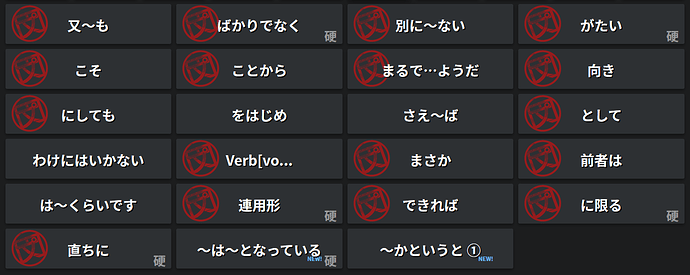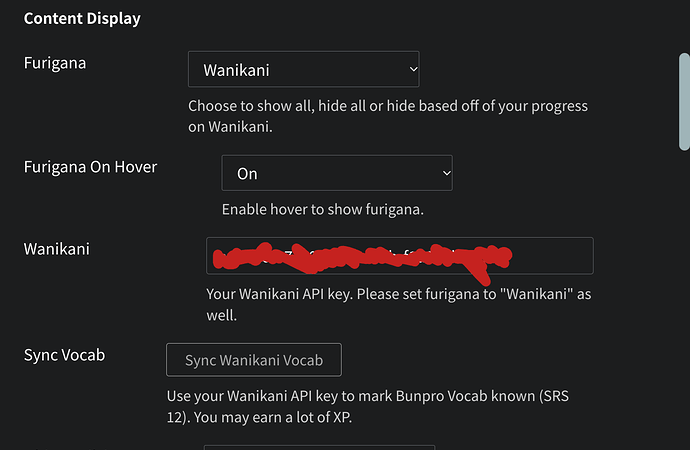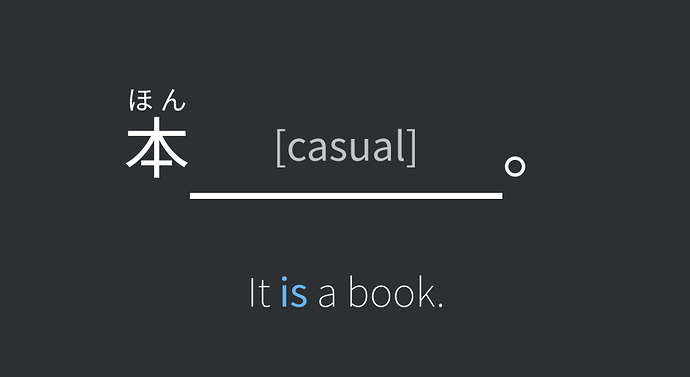Don’t translate “~ing” to Japanese.
Translate “while V~ing” or “am V~ing” to Japanese. (ながら or ている)
General small question/new people thread - #53 by FredKore
I don’t know what you’re trying to tell me.
I’m asking how the sentence would change or why it wouldn’t work if I used ている or ているところ
Edit: Oh I see I’ve asked this question before and you were showing me where you already answered it. Thanks! Sorry I’ve been working out in the sun a lot and I’m a bit frazzled when I get home
Hi! Could someone from the Bunpro team please activate my subscription? I really don’t know how lengthy a waiting time to expect, thus I’m asking. Especially since it’s Saturday and I don’t know whether subscriptions are activated on the weekends, at all? I figured that others had this problem before me, but I don’t think that a whole new thread on its own is necessary to address this, so I’m posting here instead. Thank you in advance!
Hi! “First-time caller, long time listener” and I still haven’t figured out exactly what 硬 in some grammar points is supposed to indicate.
Is this about the difficulty? Set phrases? I never paid much attention to it but I’m curious now.
@HaroldoNVU I found it!
" The grammar point’s meaning and structure are listed under the Meaning tab. Some grammar points have further breakdowns, specific rules, or nuances that will appear in orange under the meaning and structure. Grammar points that have exceptions to rules, irregular conjugations, etc. will be marked with a  symbol. Grammar points marked with “硬” indicate that that grammar point is formal. "
symbol. Grammar points marked with “硬” indicate that that grammar point is formal. "
It was kinda hidden on the forums, specifically the FAQ. I didn’t have any idea what it was either 
Thank you. I can see the pattern now 
Hi, when doing reviews I see that there are some keyboard shortcuts, for example, “a” to show the correct answer. But it doesn’t work in kana input mode (which I use to type answers).
Switching between input modes is quite a hassle. Is there any way to use shortcuts in kana input mode?
Hi, I’m fundamentally not understanding something.
This is the grammar point なくて | Japanese Grammar SRS which I think I understand.
I don’t understand part of this sentence
部屋が暖かくなくて全然寝れません。
The question wants you to augment [暖かい]
It says the correct way to do this is 暖かくなくて.
My question is why is い becoming く. Why doesn’t い become き?
What am I not understanding here, why does it change vowels?
Hey @Superpnut !
When conjugating い-adjectives into their negative form, the い gets dropped and is replaced with a く. This might be useful!
Hi, can anyone explain why this is wrong?

During the lesson, it said that the answer is も “Tanaka-san is also famous”, but to me as a new person to grammar, it seems like it should also make a lot of sense as “Tanaka-san is famous”.
I didn’t use the hint to show that it wanted “both”.
I suppose my question is, how are you supposed to know that this is "も” during a lesson without using a hint when は also seems correct too. It seems impossible unless there is a trick I’m missing.
Should we not have something to say someone else is famous first, so that we can know to use “も”.
E.g.
Lewby: Alice is famous
Bob: What about Tanaka-san?
Lewby: Tanaka-san is also famous.
But I think I was only shown 田中さん_有名です。so there is no way to know it’s “also” rather than は.
Take this with a big grain of salt because I’m lower intermediate myself and not super confident in my particle knowledge, but I think は here, if anything, implies the opposite because it has a contrastive function. It’s more like Tanaka (as opposed to whoever was discussed before) is famous.
But either way, there is no:
Because we’re given the sentence in a vacuum, so I think without more context it could be が、は or も.
If you’re new to grammar, it might be helpful just to have the hints on for the time being. Especially at the lower levels, you’re likely gonna run into things like this a lot, since you’re building on the fundamentals. It does get better the further along you go, at least in my opinion, so it becomes a lot easier to work without the hints.
There is no need to switch! If you just use your keyboard as normal (non-kana mode), bunpro changes the input to kana automatically. I don’t think there is a way to see the answer before you type something in, though.
“Hints” are a misnomer in Bunpro. They are often required to determine what the question is asking you to say. In general, you’ll find lots of grammatically correct ways you can fill in blanks that are not what the question is asking, and therefore will be marked wrong.
In this case, the question specifically was requiring you to convey “also”, which is why も works and は doesn’t.
On the flip side, once you learn several ways to express a similar concept, I’ve found Bunpro to be extremely good about not marking alternatives wrong. Instead it will provide an extra message to direct you to the answer, or else it may just count your alternative answer correct.
Personally, I keep hints off so I can try to understand the sentence on my own. After reading the sentence but before answering, I click to show the hint so that I know what it wants.
So nope, you’re not missing anything here. “Hints” should probably be renamed to “prompts” or something like that since they are absolutely required for disambiguation in many cases.
Yeah I wanted to answer without hints because the word “hints” implies I’m struggling or need “extra-support” which definitely has a negative feeling to it.
But it is required to use them to get these sorts of questions correct I guess. So I guess I’ll use them then!
Hi, I’m wondering how to make the “hide furigana based on Wanikani progress” feature work. Just choosing the relevant options in settings doesn’t seem to do anything.
I’m not super sure because it was a long time ago. BUT I think you need to make a new API code you can’t just use an old one and it requires the correct permissions. Could be wrong but I kind of remember needing to do something like that.
Is there a quick way to reset vocab reviews or do I have to do it one by one?
Thank you for replying:)
I did generate a new API code for Bunpro, but I can’t see why it would require anything more than the standard “read” permissions. Do you remember which other permissions should be included?



